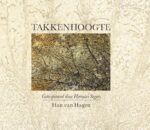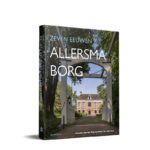De Groninger schilderkunst
€ 27,90
Tot nu toe bestond er geen uitgebreid overzicht van de Groningse kunstgeschiedenis van de 16e en 17e eeuw. Met De Groninger schilderkunst in de 16e en 17e eeuw vult Joop van Roekel deze leemte op. Het geeft een overzicht van de kunsthistorische ontwikkelingen in Groningen en plaatst die in verhouding tot de Nederlandse kunstgeschiedenis. Daarbij worden en passant veel schilderijen aan tot nu toe onbekende Groningse kunstenaars gekoppeld. In het boek is een complete namenlijst opgenomen van bestuurders en kunstenaars van het glazenmakers- en schildersgilde.
Joop van Roekel (1953) studeerde kunstgeschiedenis en werkte meer dan twintig jaar bij bibliotheken in Groningen. Hij publiceerde meerdere boeken en artikelen over regionale (kunst)geschiedenis en fotografie.
Gerelateerde boeken
-
-
-
Zeven eeuwen Allersmaborg
€ 32,50Zeven eeuwen Allersmaborg
Annette van der Post en Henk Th. van VeenVerscholen tussen de bomen in het Reitdiepdal bij Ezinge ligt de historische borg Allersma. Een statig maar sober gebouw met een lange en rijke geschiedenis, die in dit boek voor het eerst wordt beschreven.
Zeven eeuwen Allersmaborg schetst de levens van voorname Ommelander families die er permanent woonden en van Groninger regenten die in stadpaleizen resideerden en Allersma koesterden als hun buitenverblijf. Veel markante eigenaars en bewoners vanaf de middeleeuwen tot de twintigste eeuw passeren de revue: jonkheren, notarissen, gepensioneerde boeren en kunstenaars.
In de tweede helft van de twintigste eeuw ontwikkelde Allersma zich tot een artistieke broedplek door de gastvrijheid van het kunstenaarsechtpaar Martin Tissing en Annie Vriezen. Nationaal en internationaal opererende kunstenaars laafden zich er aan de betoverende atmosfeer.





